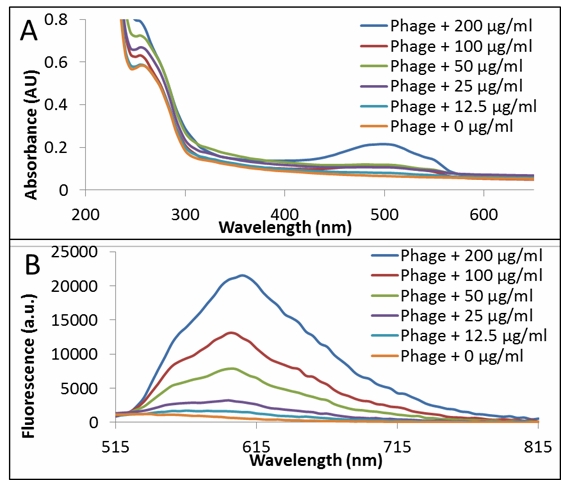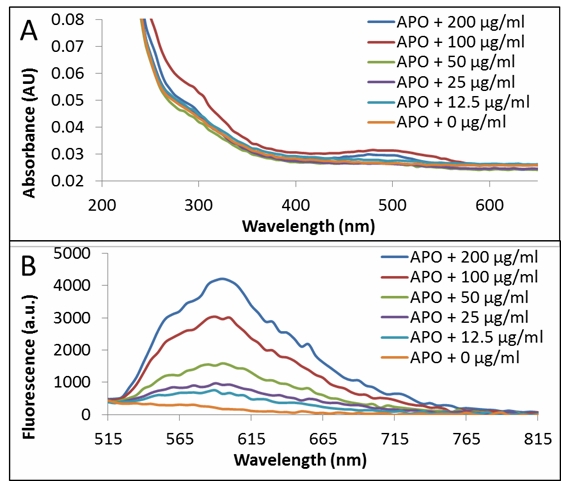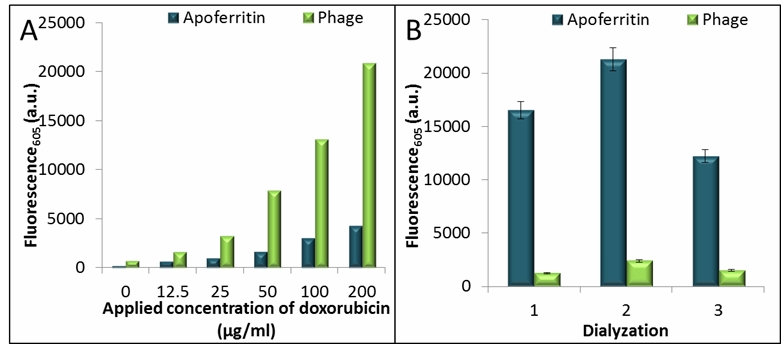
Delivery of doxorubicin using protein nanocarriers
Simona Dostálová, Dita Műnzová, Markéta Vaculovičová, René Kizek
Anthracycline antibiotic drugs are widely used in treatment of many patients with cancer. First anthracycline drug, daunomycin (or daunorubicin) was found in a number of different wild type strains of Streptomyces. However, in cancer treatment the most commonly used anthracycline drug is doxorubicin (DOX) or one of its 2000 known analogs1.
DOX is used in treatment of many different types of cancer such as neuroblastomas, leukaemia, lymphomas or breast, testicle, ovarian, lung, bladder, thyroid gland or head and neck carcinomas. Although it is so widely used, many side effects have been observed in patients such as sores in mouth and on lips, darkening of palms and nails, unusual bleeding and bruising, nausea and vomiting, and life-threatening cardiotoxicity 2.
To eliminate the negative side effects of cancer treatment, researchers are trying to find either new analogs of DOX which are non-toxic for healthy cells or new way to deliver DOX directly into the cancer cells. For targeted delivery, it is possible to administer the drug directly into solid tumor. However, non-solid tumors or tumors with unknown location in patient’s body require encapsulation of DOX in suitable nanocarrier. Liposomal form of DOX is already being sold under the trade name Myocet 3. For enhanced biocompatibility, the liposomes were modified with polyethylene glycol under the trade name Doxil 4.
Protein based natural nanocarriers in comparison with artificial nanocarriers seem to be more suitable for delivery of the drugs in patient’s body because of their lower immune response. The protein nanocarriers are usually self-assembled and can either be protein cages, viral capsids or virus-like particles 5.
In this work, we compared two types of protein nanocarriers – phage λ and apoferritin, by their ability to encapsulate anthracycline drug doxorubicine. The encapsulation was verified by fluorescence of doxorubicin after the removal of free, non-encapsulated doxorubicin by dialysis.

Fig. 1: The influence of doxorubicin encapsulation on absorbance (1A) and emission (1B) spectra of phage λ.

Fig. 2: The influence of doxorubicin encapsulation on absorbance (2A) and emission (2B) spectra of apoferritin.

Fig. 3: The comparison of phage and apoferritin as nanocarriers. Fluorescence of doxorubicin encapsulated in phage and apoferritin (3A) and undesired release of doxorubicin from nanocarriers during dialyzation measured by fluorescence (3B)
1. Slamon D. J., Leyland-Jones B., Shak S., Fuchs H., Paton V., Bajamonde A., Fleming T., Eiermann W., Wolter J., Pegram M., Baselga J., Norton L.: New England Journal of Medicine, 344, 783 (2001).
2. Beier C. P., Schmid C., Gorlia T., Kleinletzenberger C.
, Beier D., Grauer O., Steinbrecher A., Hirschmann B., Brawanski A., Dietmaier C., Jauch-Worley T., Kolbl O., Pietsch T., Proescholdt M., Rummele P., Muigg A., Stockhammer G., Hegi M., Bogdahn U., Hau P.: Bmc Cancer, 9, (2009). 3. Batist G., Ramakrishnan G., Rao C. S., Chandrasekharan A., Gutheil J., Guthrie T., Shah P., Khojasteh A., Nair M. K., Hoelzer K., Tkaczuk K., Park Y. C., Lee L. W., Myocet Study G.: Journal of Clinical Oncology, 19, 1444 (2001).
4. O'Brien M. E. R., Wigler N., Inbar M., Rosso R., Grischke E., Santoro A., Catane R., Kieback D. G., Tomczak P., Ackland S. P., Orlandi F., Mellars L., Alland L., Tendler C., Grp C. B. C. S.: Annals of Oncology, 15, 440 (2004).
5. Sawant R. M., Hurley J. P., Salmaso S., Kale A., Tolcheva E., Levchenko T. S., Torchilin V. P.: Bioconjugate Chemistry, 17, 943 (2006).
6. Huska D., Adam V., Babula P., Hrabeta J., Stiborova M., Eckschlager T., Trnkova L., Kizek R.: Electroanalysis, 21, 487 (2009).
7. Yildiz I., Lee K. L., Chen K., Shukla S., Steinmetz N. F.: Journal of controlled release : official journal of the Controlled Release Society, 172, 568 (2013).
8. Blazkova I., Nguyen H. V., Dostalova S., Kopel P., Stanisavljevic M., Vaculovicova M., Stiborova M., Eckschlager T., Kizek R., Adam V.: International Journal of Molecular Sciences, 14, 13391 (2013).
9. Tmejova K., Hynek D., Kopel P., Dostalova S., Smerkova K., Stanisavljevic M., Nguyen H. V., Nejdl L., Vaculovicova M., Krizkova S., Kizek R., Adam V.: International Journal of Electrochemical Science, 8, 12658 (2013).
J.Met.Nano:
volume-1, issue-3
- Human papilloma virus (HPV) and methods for its identification in head and neck cancers
- Clinical application of capillary electrophoresis – determination of free amino acids in body fluids
- The role of phytochelatins in plant and animals: A review
- Paramagnetic particles for immobilization of metallothionein – promising biomarker of head and neck cancer
- Delivery of doxorubicin using protein nanocarriers
- MIR-150 electrochemical detection connected with specific isolation based on magnetic particles
- Nanomaghemite core functionalized with ion-exchange resins for isolation of biogennic amines
- Modern techniques of increase the antibacterial properties of the instruments
- Detection of sentinel lymph node using magnetic nanoparticles
- Opening of working and meeting room for nanobiometalnet project
- New directions of electrochemistry, bioelectrochemistry,nanoelectrochemistry and bioengineering
 PDF
PDF